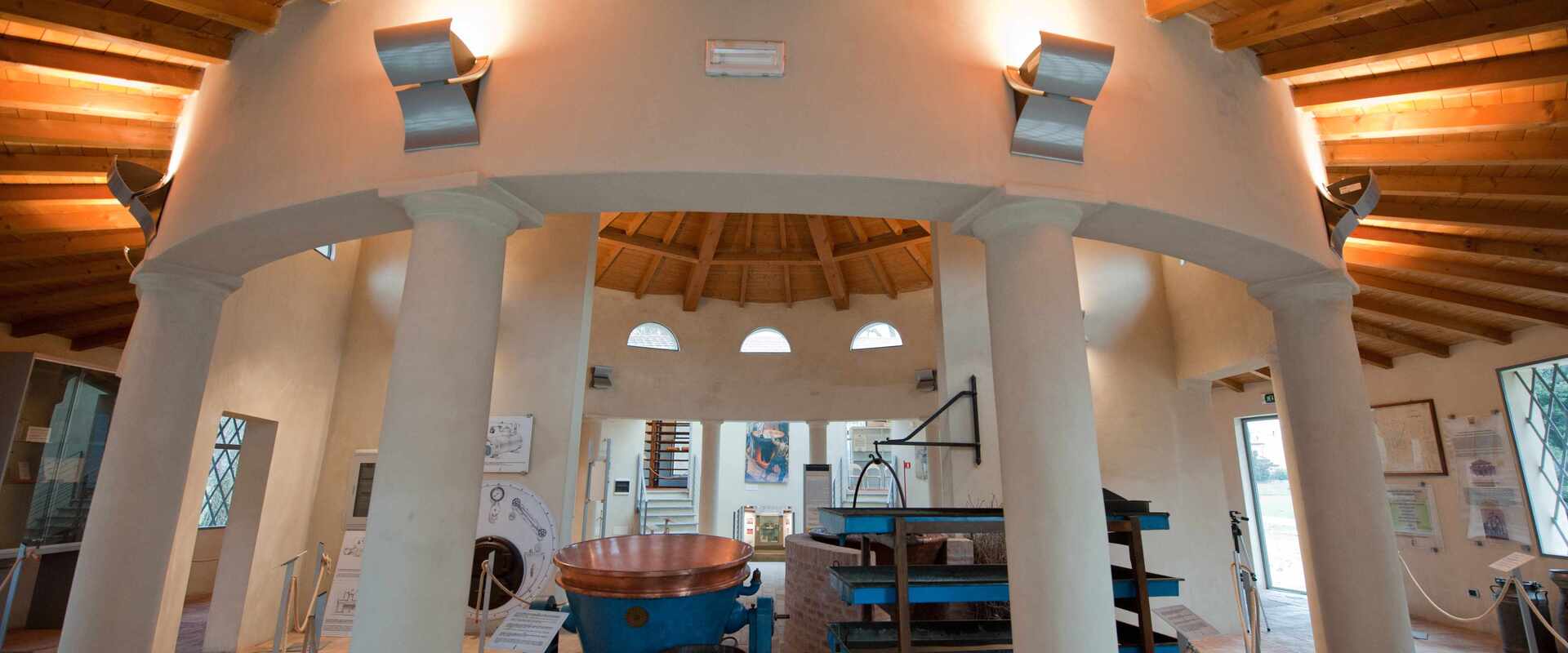Parmigiano Reggiano Museum: the culture and gastronomy of the King of Cheeses
2017-09-25
It’s eight centuries old, and ageing very nicely. Parmigiano Reggiano is a traditional Italian product with a long cultural and gastronomic history behind it abounding in curious, entertaining details. The
Parmigiano Reggiano Museum in Soragna, in the province of Parma, is the right place to find out all about it.
The museum’s eighteen sections include areas focusing on the process of producing the famous cheese (the topic of our previous post) and others looking at its significance for
culture and
gastronomy.
In the area focusing on the
image of Parmigiano Reggiano, we learn that the cheese made its first appearance in the figurative arts around 1600, when
Annibale Carracci produced an engraving entitled
Seller of Parmesan Cheese. An engraving from Parma dated around the same time represents
Saint Lucius, patron saint of cheeses and cheese-makers (known at the time as
Lardaroli), the topic of our next post. The making of the King of Cheeses was first depicted in an 1890 painting by Reggio artist
Cirillo Manicardi.
The
first film showing rounds of Parmesan cheese dates from around the time of the first world war, while the first film demonstrating how the cheese is produced was made in 1943. The greatest of all cheeses has also been immortalised in
photography: the museum includes a precious series of photographs dated 1944 (taken in a Parma cheese dairy by a German war correspondent), demonstrating the entire sequence of operations involved in making the cheese.
The
marketing of Parmesan cheese also offers some food for thought. Historic promotional material for Parmigiano Reggiano cheese is limited to a few rare
posters, including an amazing poster designed by
Achille Luciano Mauzan for Bertozzi, in which three greedy-looking characters stick their
big noses into a round of cheese to enjoy its aroma, and a refined metal plate from Pelagatti illustrating a scene in a luxurious restaurant, where the
maître d’ is grating Parmesan cheese directly onto the plate of a satisfied diner, produced in the nineteen-thirties. The museum’s collection also includes a rare poster designed by
Gino Boccasile for Tavella around the year 1940, in which a chubby-cheeked cook ecstatically embraces a “sensual” round of cheese, lips pursed for a kiss.
A
touchscreen video shows advertisements made by the
Consorzio di Tutela or producers’ association since the early ’sixties for cinemas and TV.
Lastly, the museum also includes a section about
gastronomy and recipes. In addition to a display case illustrating the evolution of the cheese-grater and other implements used to enjoy Parmigiano-Reggiano cheese, such as the special cheese knife, there is an area focusing on dishes featuring this noble cheese appearing in the most important cooking handbooks written in Europe between the sixteenth and the nineteenth century.
A little historical trivia: the first recipe featuring the famous cheese we still enjoy today is a fourteenth-century recipe for a
Torta Parmesana, which has an impressive list of ingredients, demonstrating that the cuisine of Parma was already famous in medieval times!
Mariagrazia Villa
Photos: © Musei del Cibo della provincia di Parma
